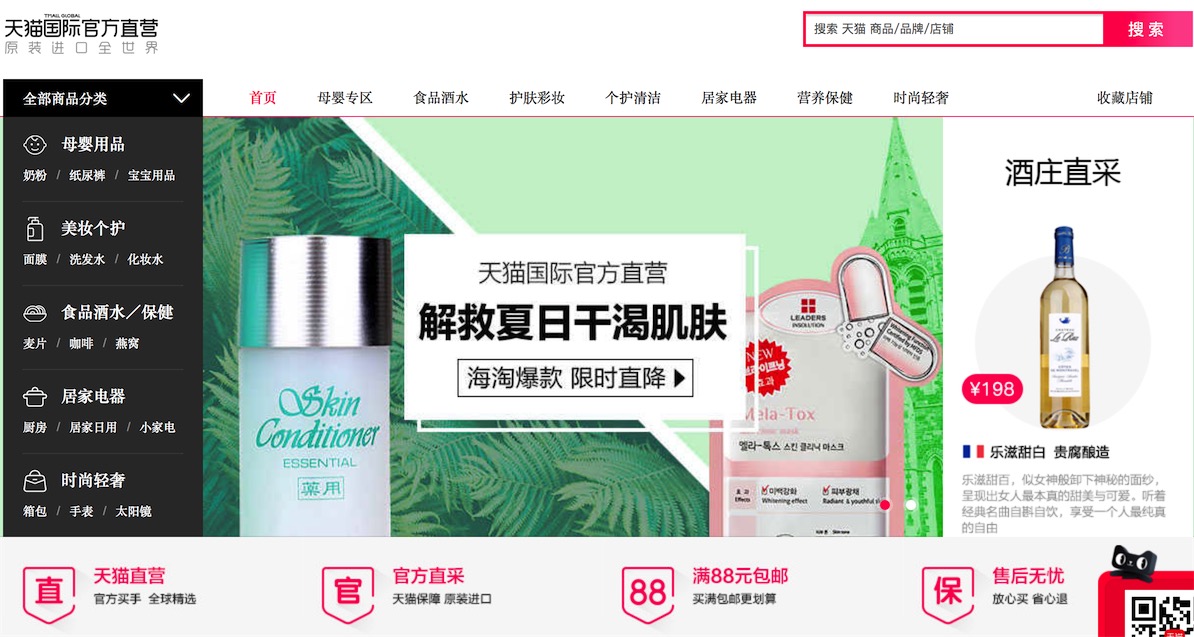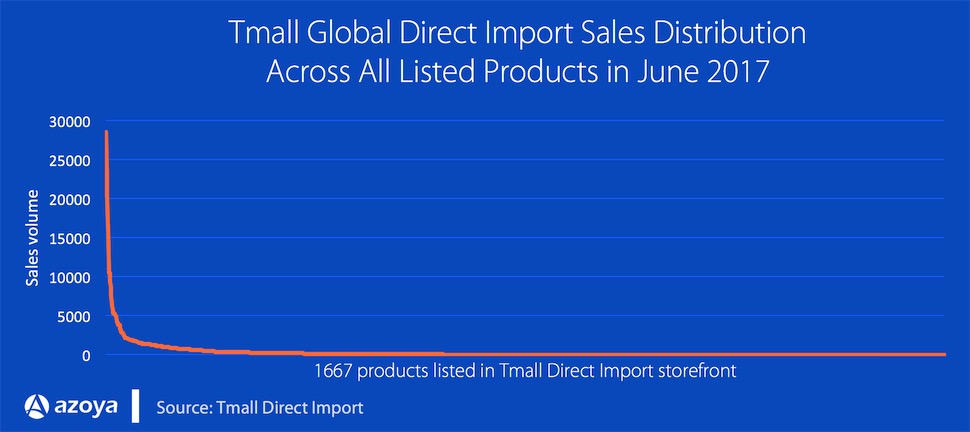Tmall Global to Support Own Retail Storefront, and impacts to retailers
For retailers that had already launched storefronts in the Tmall Global marketplace, they will be competing with both customer traffic and product prices with their ‘host’, let alone competition from external cross-border B2C websites.
by Azoya
Tmall Global’s recent change of strategy toward its direct sales channel – Tmall Direct Import – could become a new challenge for global retailers. The official storefront of Tmall Global’s own retail channel will be benefited from better traffic treatment inside the marketplace, one of the biggest cross-border e-commerce marketplace in China.
For retailers that had already launched storefronts in the Tmall Global marketplace, they will be competing with both customer traffic and product prices with their ‘host’, let alone competition from external cross-border B2C websites. Hereafter is a brief history of Tmall Direct Import:
2016 March, Tmall Direct Import storefront launched
2016 November, Tmall Direct Import storefront appeared at Tmall Global navigation bar
2017 February, Tmall Global Direct Import renamed to Tmall Choice
2017 April, Tmall Global Direct Import resurfaced

*A screen shot of Tmall Direct Import, from Tmall.hk
Launched in March of 2016, the TDI had remained relatively low key. Branded under the Tmall Global, the TDI serves as a direct sales channel that sources from overseas brands and distributors. To date, the TDI has accumulated more than 300,000 customers, with more than 1600 products listed[1], and roughly 550,000 products sold in June 2017[2]. The store had shown great capacity at building bestsellers, as top 20 bestsellers accounts to 40% of total sales in June 2017.

*Top 20 best sellers accounts to 40% of total sales in June 2017
In an April keynote, Tmall Global announced to the public that they will be launching a ‘Tian Gong’ project to purchase stock directly from the brands and distribute these products via their own retail storefront. It was said that the project could “help brands to quickly test the market response without heavy investment in launching storefronts in the Tmall Global marketplace or purchasing customer traffic.” Internal source from Alibaba also disclosed that Tmall Global will invest more traffic to support growth of their own retail storefront.
Tmall Direct Import Similar to Tmall Super Market?
Alibaba had traditionally focused more on building a commerce platform rather than engaging in retail directly, until the launch of supermarket service through Tmall. The Tmall Supermarket is one of the few self-operated storefronts of Alibaba. Customers make purchase on Tmall Supermarket and they will receive products sent from the partner suppliers of Tmall. Tmall oversees daily operation, traffic acquisition and absorbs related costs. Thanks to the huge traffic volume and complete product categories, Tmall Supermarket had now become the largest online supermarket in China.
The model of the Tmall Supermarket will be replicated to Tmall Direct Import. Suppliers of Tmall Direct Import will be selected from merchants that are already selling in Tmall Global, and their products can also be sold via the Tmall Direct Import on a consignment basis. Tmall Global will take a cut from the total sales to compensate for the costs of traffic, promotion, operations, logistics.
Domestically wide, Tmall Global is facing real challenges from other major cross-border B2C players, including Kaola, JD, and VIP.com. Recent report shows that Tmall Global only accounts to 19.1% of total cross-border import volume[3], while other self-operated B2C websites combined consist more than 70% of the total market share. A major difference between Tmall Global and other players is that direct sales only accounts to a small portion of total transaction in Tmall Global, while Kaola, JD and VIP.com are all investing heavily in sourcing from brands directly.
How will it affect retailers in Tmall Global?
Apart from being a marketplace to provide services to facilitate sales of merchants, Tmall Global’s is now planning to engage in retailing. But reselling retailers’ products wouldn’t make sense for Tmall Global, because either from supply price or stock levels, retailers cannot compete with strong distributors or manufacturers. Tmall Direct Import will seek higher margin to cover the internal supply of traffic and the promotion, something that would be a big burden for retailers.
Tmall could be one of the least friendly to retailers with less known brands and smaller margin, as both visible cost and invisible cost of operating on Tmall Global could eat up 40% of margins of retailers. Visible cost of operating on Tmall Global includes a fixed set-up fee ranging from 15,000 to 100,000 USD, technical fees from 3% to 5%, and the commission of Tmall Partner operation ranging from 10% to 20%. Invisible cost includes various forms of marketing costs, which generally eats up 20% of merchants’ margin, and certain level of discounts.
ASOS and Lookfantastic are among a few UK retailers that had abandoned the marketplace approach to the China market. Adore Beauty, an Australian women beauty retailer also left marketplace in China quoting that the market requires ‘bigger commitment’.
What Should Retailers Do?
Consumers in China are continuing to explore new channels for products that don’t have presence on existing channels. Overseas retailers with strong supply chain and products sourcing capability can still beat local players by offering a variety of choices at competitive price. Localization, marketing, and operations could be challenges for most retailers that have big dream in the China market. But with the right partner to work on these areas, global retailers can still capitalize on the growing China market demand without reliance on major marketplaces.
[1] Extracted fromTmall Direct Import on June 30th, 2017
[2] Extracted from Tmall Direct Import public sales data on June 30th, 2017
[3] EC100
Amendment:
2017/07/26: We have changed the timeline of appearance in Tmall Global navigation bar to '2016 November.' Previously it saids 2017 November. Apologies for the mistakes.